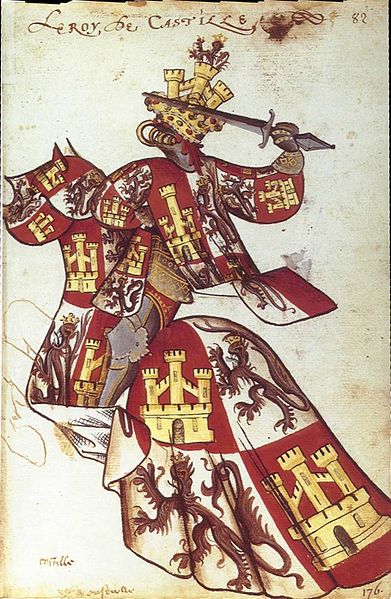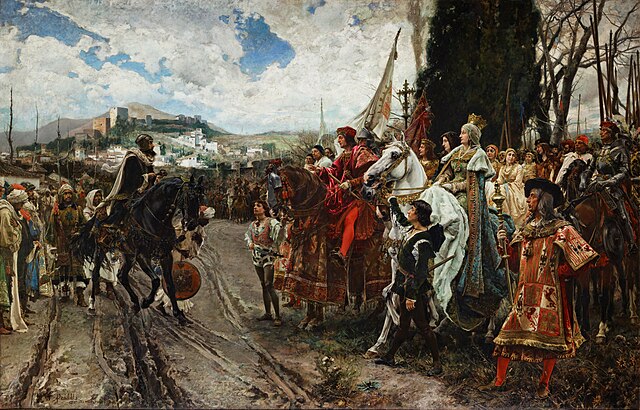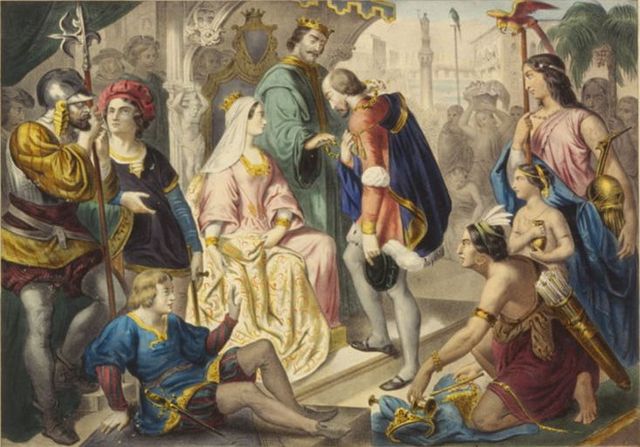The Mesta was a powerful association protecting livestock owners and their animals in the Crown of Castile that was incorporated in the 13th century and was dissolved in 1836. Although best known for its organisation of the annual migration of transhumant sheep, particularly those of the Merino breed, the flocks and herds of all species of livestock in Castile and their owners were under the oversight of the Mesta, including both the transhumant and the sedentary ones. The transhumant sheep were generally owned in Old Castile and León, where they had their summer pastures, and they migrated to and from winter pastures of Extremadura and Andalusia according to the season.
Royal cañada trail through Old Castile (Segovia, Spain)
The Crown of Castile was a medieval polity in the Iberian Peninsula that formed in 1230 as a result of the third and definitive union of the crowns and, some decades later, the parliaments of the kingdoms of Castile and León upon the accession of the then Castilian king, Ferdinand III, to the vacant Leonese throne. It continued to exist as a separate entity after the personal union in 1469 of the crowns of Castile and Aragon with the marriage of the Catholic Monarchs up to the promulgation of the Nueva Planta decrees by Philip V in 1715.
Equestrian heraldic of King John II of Castile in the Equestrian armorial of the Golden Fleece 1433–1435. Collection Bibliothèque de l'Arsenal.
The Surrender of Granada (Francisco Padilla, oil on canvas, 1882)
Columbus and the Catholic Monarchs (The return of Columbus)
"The Comuneros Padilla, Bravo and Maldonado in the Patíbulo", by Antonio Gisbert, 1860.





